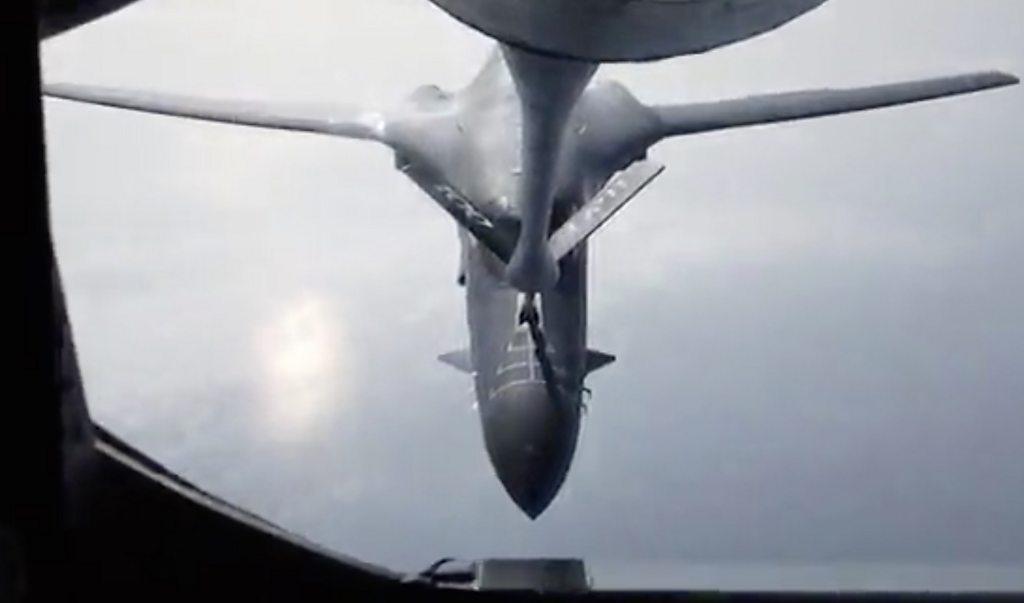Russia flexes muscles in challenge for Arctic control
- Published
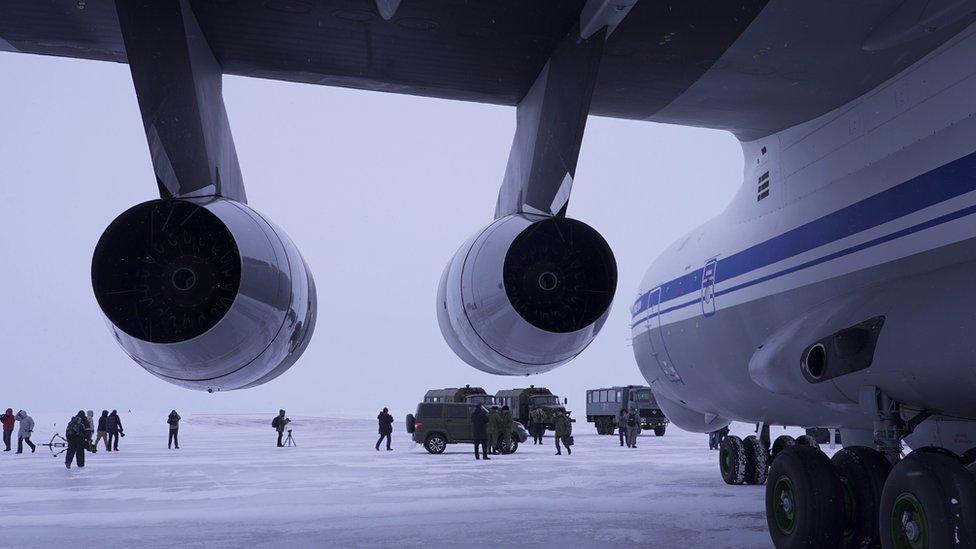
The airfield on Alexandra Island is over two hours' flight from Murmansk in Russia's north-west
The Russian military cargo plane flew us almost to the top of the world, to an archipelago once best known for its rare bird species and its walruses.
Now Franz Josef Land is home to a Russian military base and the source of added tension in relations with the West.
The US has once again accused Moscow of "militarising" the Arctic and the head of Russia's Northern Fleet has told the BBC that Nato and US military activity in the region is "definitely" provocative and on a scale not seen since World War Two.
Making the Arctic a priority for Russia
We were among the first foreign journalists taken to visit the facility on Alexandra Island, over two hours' flight from Murmansk up over the Arctic.
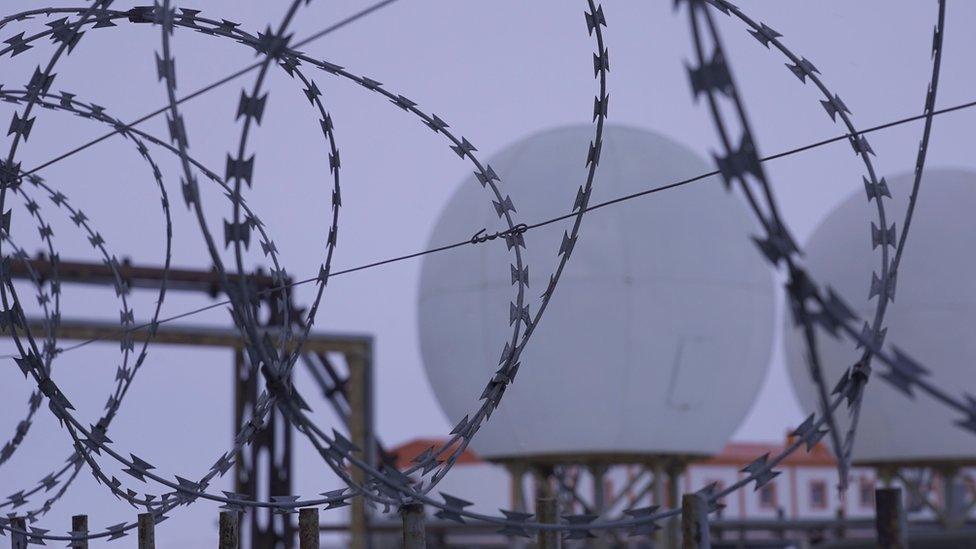
Temperatures on the island drop to minus 50C during the winter
The airfield has been upgraded to allow all kinds of planes to land all year round, though emerging on to the tarmac was like stepping on an ice rink.
Less than 960km (600 miles) below the North Pole, conditions are extreme, with deep snowdrifts and blizzards even in mid-May. For a while, rattling along in a military truck, I could make out nothing but white through the window.
In deepest winter the temperature drops to minus 50 degrees C and the soldiers occasionally have to head out in their vehicles to disperse the polar bears who amble right up to the base.
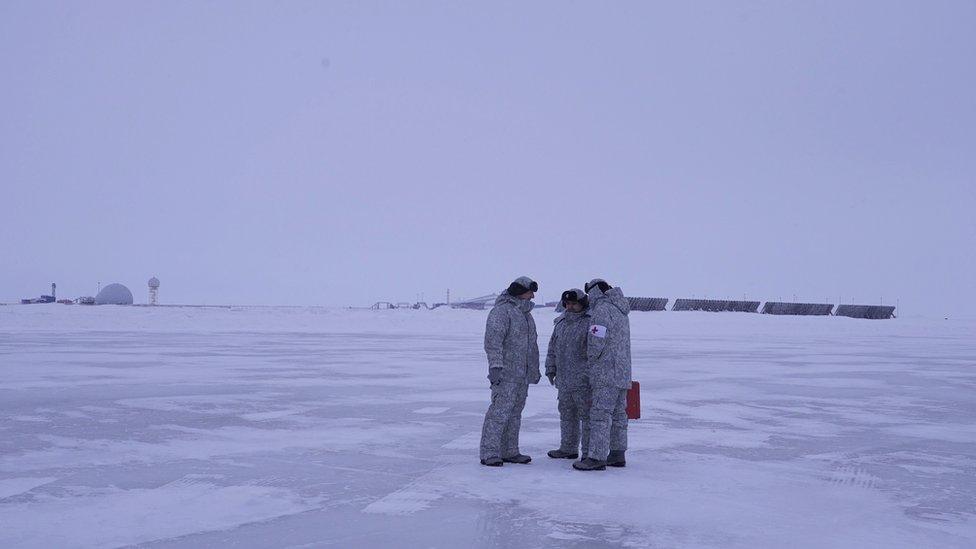
Even so, Russia has made boosting its presence in this region a priority.
'Like a space station'
Even the structure of the base is meant to make a statement: it's painted in the colours of the Russian flag, bright against the blank canvas all around.
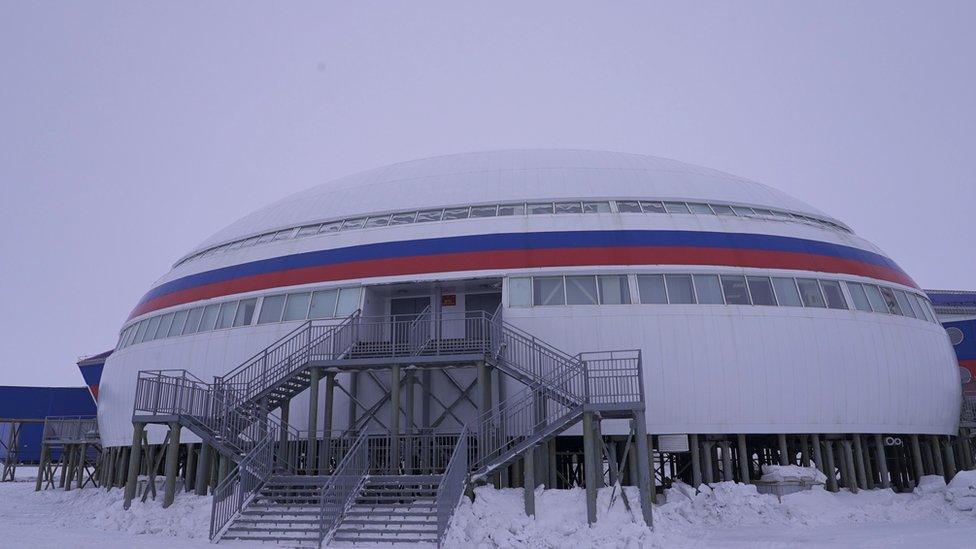
Known as Arctic Trefoil for its three-leaved shape, the base is the second of its kind in the Arctic - this one is meant for 150 soldiers.
Ahead of a tour, the commander in charge said it was so high-tech and ecologically efficient it was "like a space station, just in the Arctic emptiness instead of in orbit".
But the main show is outside, where Bastion missile launchers raise and lower their firing mechanisms as a soldier in white camouflage stands guard, gun across his chest.

Russia's Bastion missile launchers are guarded outside the base
The missile systems are "to destroy enemy ships," another soldier said. They are "effective", he informed us.
The Northern Fleet put on a far greater show of strength earlier this year when three nuclear submarines smashed through the ice simultaneously, a manoeuvre never seen before. On the same Arctic exercises, two fighter jets flew over the North Pole, refuelling in mid-air.
Such posturing is making the United States and Nato wary as Russia's military presence in the region expands to a level not seen since the Cold War.
Nato's spokeswoman confirmed that the alliance had stepped up its patrols and exercises, in response, she said, to a "more challenging security environment".
Blaming Nato for build-up
But Russia doesn't see things that way.
Before we were flown to the archipelago, we were bussed to a battlecruiser moored in the closed military town of Severomorsk. At 252 metres long, the nuclear-powered Peter the Great is the giant grey flagship of the Northern Fleet.
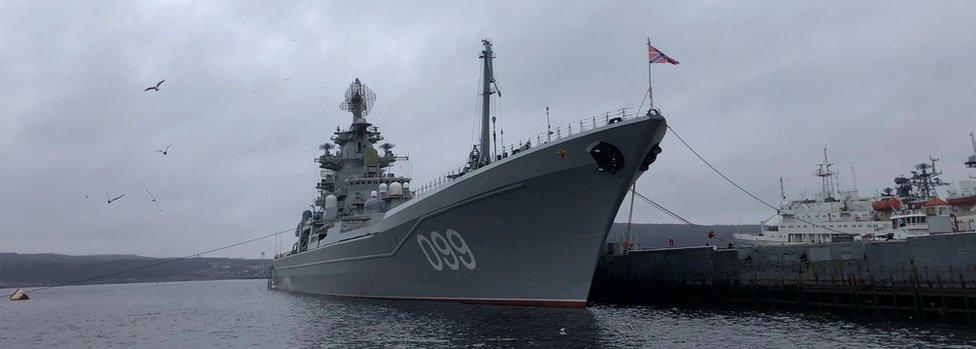
On board, the Fleet's commander, Adm Alexander Moiseyev, addressed us in front of a portrait of Peter I, the Tsar who founded Russia's navy and turned the country towards the West.
But he accused Nato forces and the US of military actions in the Arctic that increased the risk of conflict.
"There haven't been so many of their forces here for years. Decades. Not since World War Two," Adm Moiseyev countered, when I put it to him that Nato blamed Russia for the surge in tension. "We see such activity as provocative so close to the Russian border where we have very important assets. By that, I mean nuclear forces."


As for the Russian build-up, the troops are returning to a region Russia abandoned in the 1990s when the Soviet Union fell apart.
"We're just recreating the capacity to protect our borders, not to threaten anyone," argues Lev Voronkov, an Arctic expert from MGIMO university. "After the USSR collapsed, even border posts in that region were left unmanned."
That won't be an option for much longer. As the polar ice melts, removing a protective natural curtain, Russia's long northern frontier will become vulnerable.
Land of opportunity
As the Bastion missile launchers danced for the cameras on Alexandra Island, I spotted a Russian ice-breaker cutting through the frozen landscape in the distance. A smaller cargo ship followed in its wake and an iceberg loomed behind both of them.
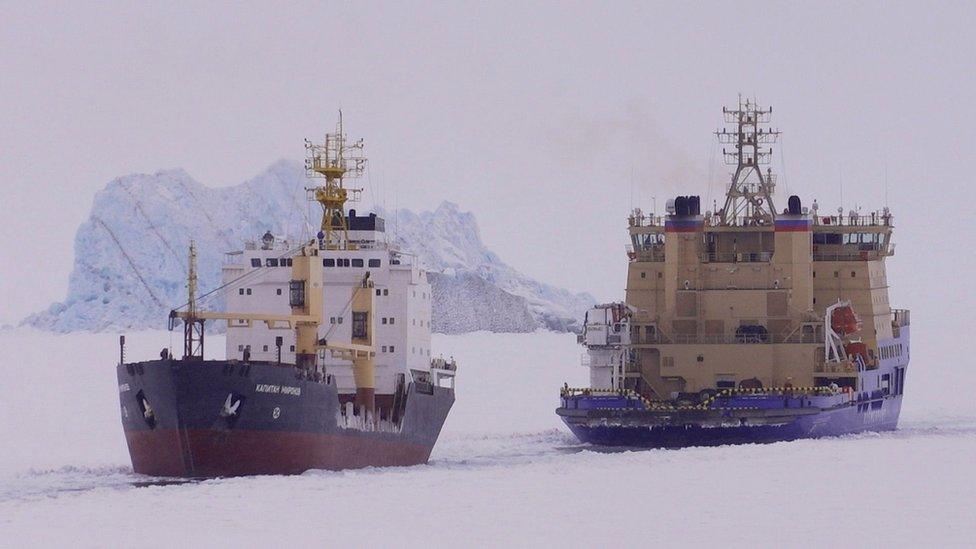
The vessels were crawling along the northern shipping route that skirts the archipelago and that Russia hopes to develop and control as global warming makes it easier to navigate. Trade would include exports of the large oil and gas reserves beneath the sea here.
Admiral Moiseyev calls his troops the "main instrument" for protecting those economic interests, as well as Russia's borders.
As competition begins to heat up, our visit to Franz Josef Land was a chance for Russia to flex some muscle and send a message: that its ambitions for the Arctic are great and growing and they are interests it's ready to defend.
The US has deployed long-range bombers to Norway for the first time, in a move seen as a message to Russia
- Published18 October 2020

- Published7 March 2021
